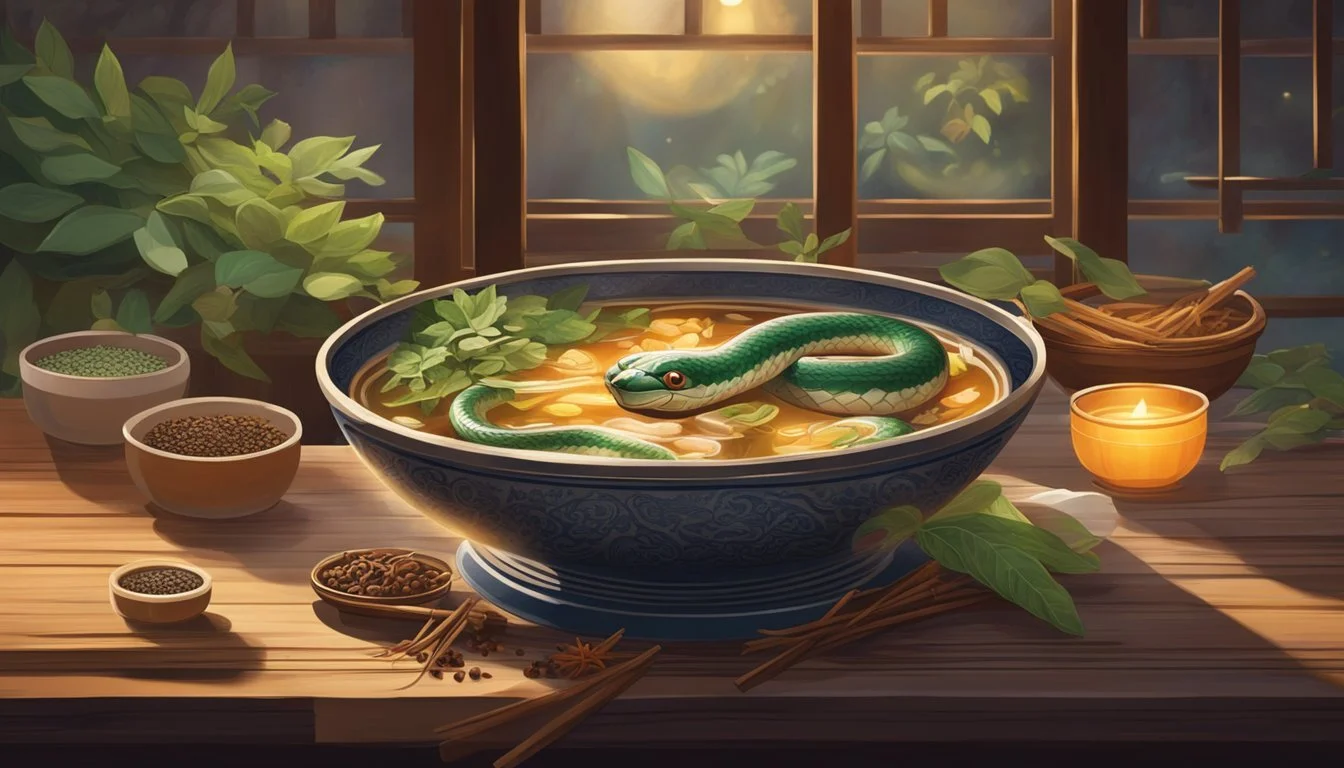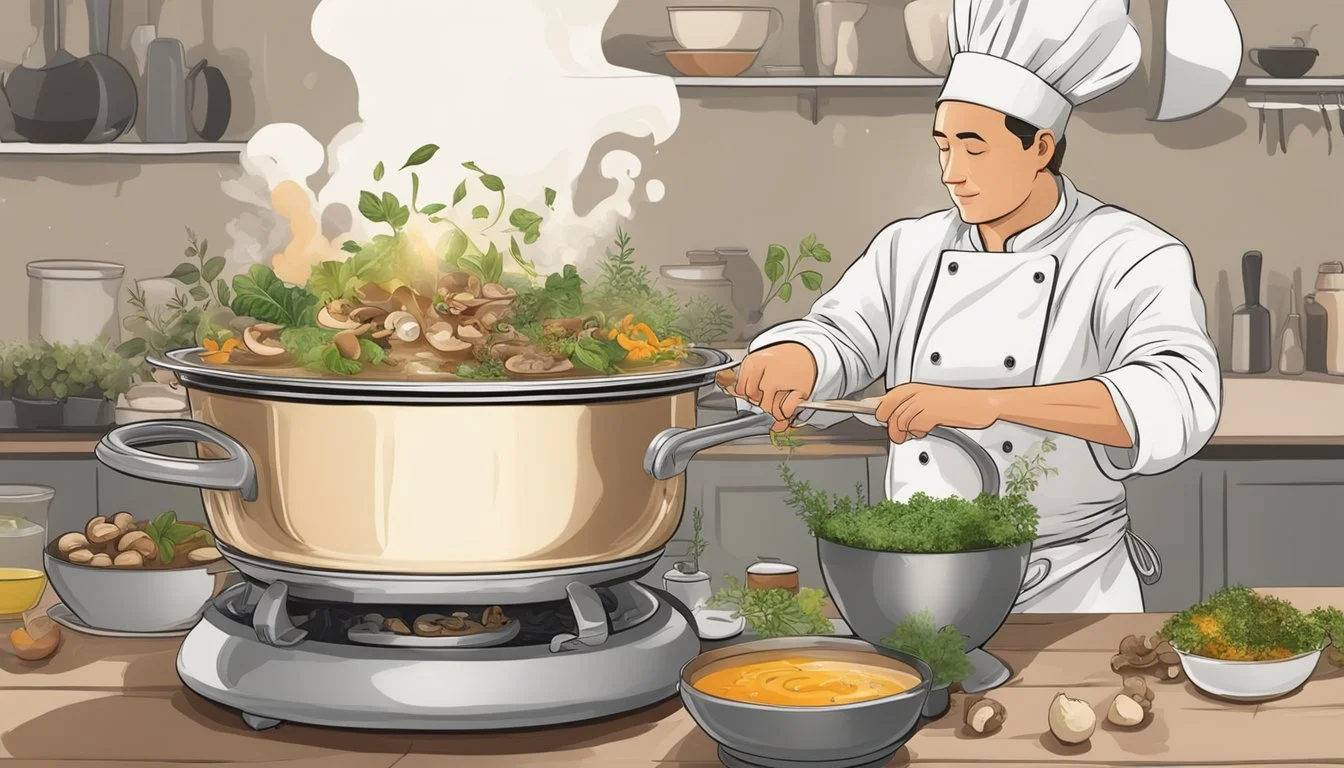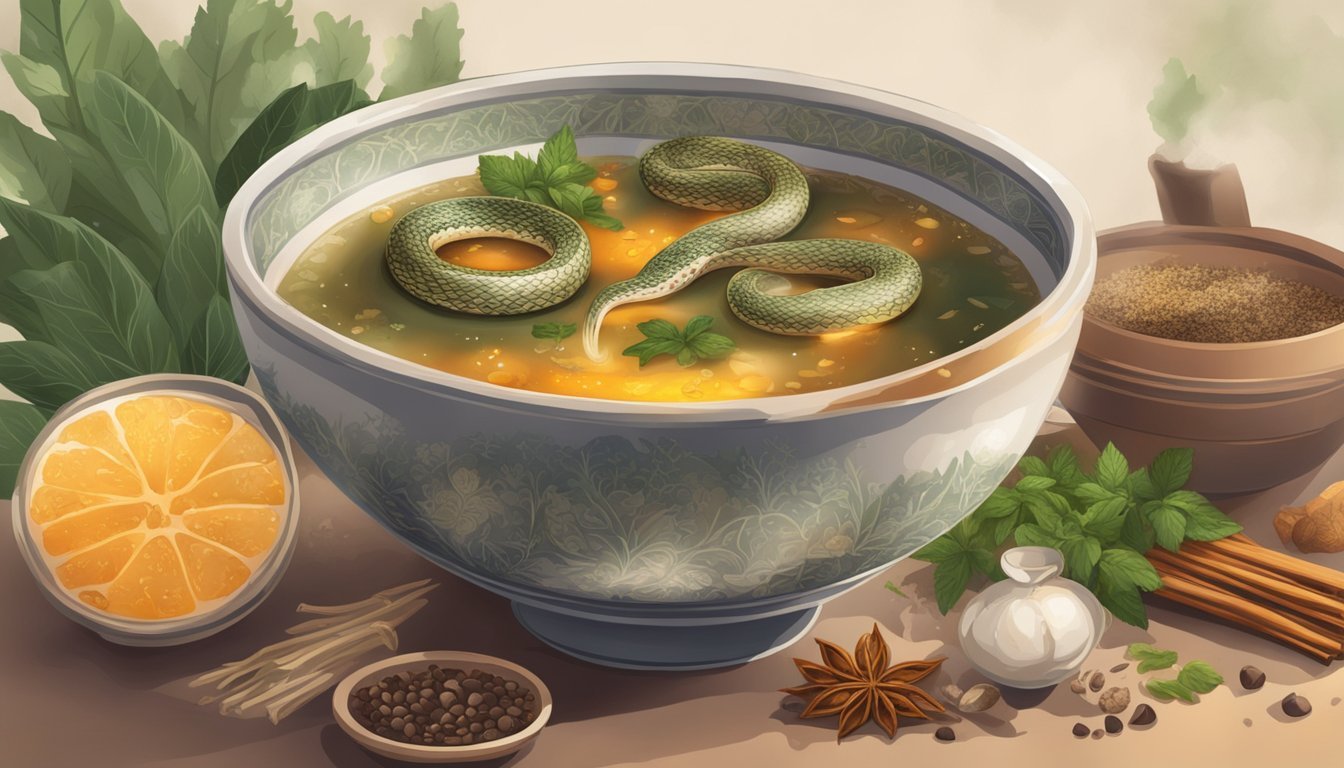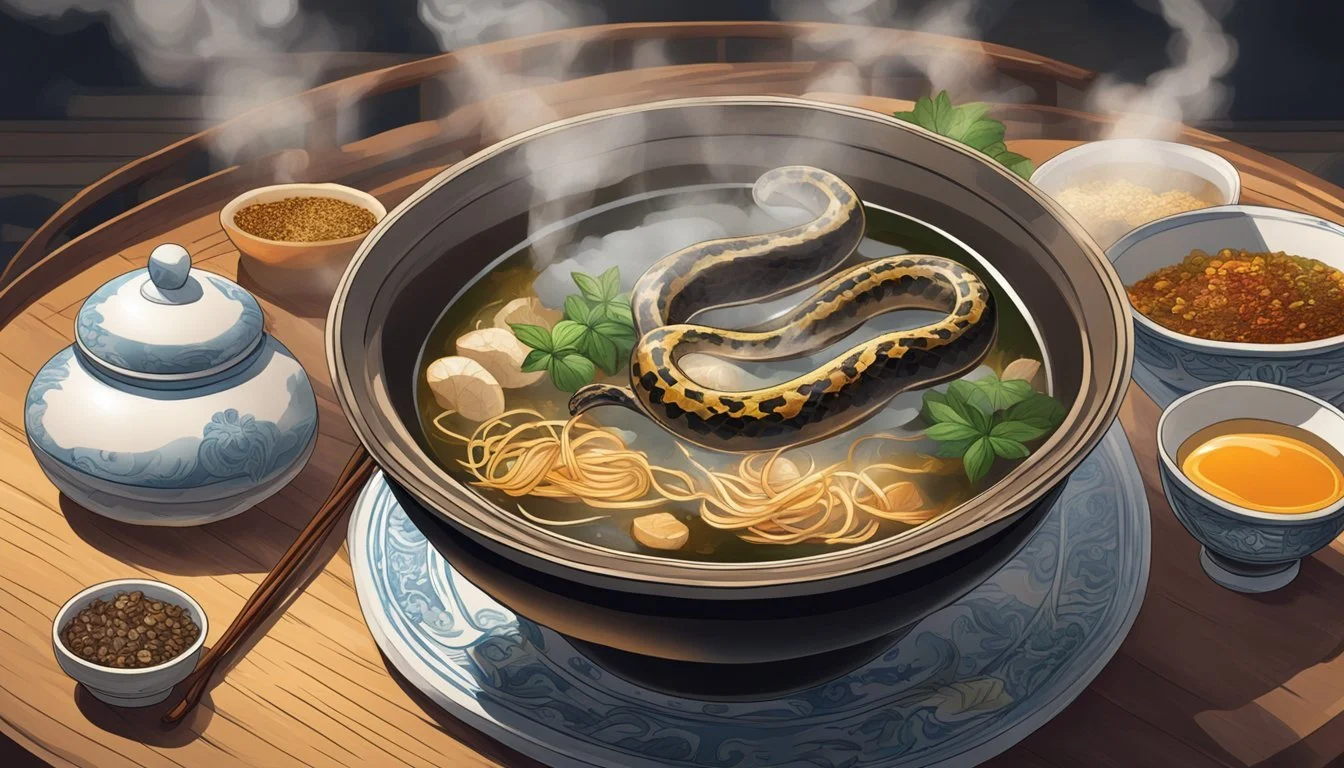Snake Soup The Hong Kong Specialty That Warms You Up - Unveiling a Traditional Delicacy
Snake soup is a traditional Hong Kong dish that has warmed the bellies and hearts of locals for generations. Characterized by its rich, umami-laden broth, it's a wintertime favorite that's revered not only for its flavor but also for its purported medicinal properties. The soup typically contains a variety of snake meats, and it is believed by some to help cure ailments such as rheumatic disorders or simply to fortify the body against the cold.
Establishments like Ser Wong Fun, a restaurant with a history spanning over 120 years, have perfected the art of snake soup, crafting recipes that have endured the test of time. The selection of ingredients extends beyond snake meat, often incorporating luxurious additions such as abalone and fish maw, which contribute to the depth and complexity of the soup. While snake soup's origins can be traced back to Chinese culinary traditions, it has solidified its place in Hong Kong's local cuisine as a beloved specialty.
Despite facing challenges such as the impacts of the Covid-19 pandemic on the industry, snake soup continues to hold its ground as a symbol of Hong Kong's resilience and culinary innovation. Whether sought after for its health benefits or as a culinary experience, snake soup remains an integral part of the region's gastronomic fabric, inviting both locals and curious tourists alike to savor this unique and warming dish.
History and Cultural Significance
Snake soup is not merely a dish but a testament to Hong Kong’s rich culinary culture, interweaving traditional Chinese medicine and multi-generational family businesses into a warm delicacy cherished during the colder months.
Cantonese Cuisine and Snake Soup
Cantonese cuisine, a hallmark of Chinese gastronomy, is renowned for its variety and sophistication. Snake soup stands out among the traditional dishes, particularly in the context of Hong Kong. With a history that stretches back to the era of the Guangdong Province, snake soup emerged as a popular choice among locals over centuries. Restaurants like Ser Wong Fun in Central, acclaimed for their snake soup, illustrate how this dish has cemented its place in the city's culinary scene. It epitomizes a blend of flavors and cultures unique to regions like Sheung Wan, known for specialty food markets and family-owned eateries.
Snake Soup in Traditional Chinese Medicine
Snake soup is deeply rooted in the principles of Traditional Chinese Medicine (TCM), where the consumption of snake meat is believed to possess warming properties that enhance the body's vital energy, or "qi". In TCM, such dishes are often prescribed to counteract the body's cold during winter. Ingredients such as venomous snakes are carefully selected and prepared to ensure the safe consumption and intended health benefits, like improving blood circulation and alleviating bodily discomfort.
Famous Snake Soup Locations in Hong Kong
The popularity of snake soup has led to the establishment of several famous venues throughout Hong Kong. Ser Wong Fun in Central, a multi-generational family business dating back to the 19th century, is among the city's most renowned establishments for authentic Cantonese snake soup. Many of these eateries have become institutions, drawing in locals and tourists alike who are eager to experience this unique and traditional dish firsthand. These venues not only serve a timeless delicacy but also preserve and honor the historical significance and cultural practices surrounding snake soup within the fabric of Hong Kong's societal tapestry.
Ingredients and Preparation
The intricate craft of snake soup preparation is a testament to the culinary expertise found in Hong Kong. Using a blend of traditional Chinese medicine principles and complex cooking techniques, this soup boasts an array of unique components that come together to form its signature taste and texture.
Common Snake Varieties Used
In the making of snake soup, the meats of at least two types of snakes are typically used as the main ingredients. Commonly chosen for their medicinal properties and flavor, the banded krait and various types of water snakes are favorites. The inclusion of snake meat provides the dish with a distinctive taste and is believed to offer warming benefits to those who consume it during the colder months.
Key Ingredients in Snake Soup
Apart from snake meat, a plethora of key ingredients contribute to the rich flavor profile of the soup. Chicken and pork bones form the base of the broth, imparting a deep savoriness. Additional ingredients include:
Mushrooms: particularly shiitake mushrooms and sometimes other varieties, lending an earthy nuance.
Herbs and spices: used to enhance the soup's aromatic quality.
Ginger: finely prepared to infuse the broth with its warm, spicy essence.
The luxurious additions of abalone and fish maw elevate the texture and add umami.
Bamboo shoots and eel are occasionally incorporated, providing contrasting textures and flavors.
The Cooking Process
The preparation of snake soup is a time-intensive process that calls for skill and precision. The broth, the foundation of the soup, is boiled for more than twelve hours to extract maximum flavor from the bones. The snake meat is then thoroughly cleaned and carefully sliced before being simmered in the broth with other ingredients like red meat for an extended period. This slow simmering is key to achieving the savory, slightly sweet broth characteristic of classic snake soup. The use of snake bile is a traditional element, included for purported health benefits and to complement the flavors of the meat.
Each element is finely chopped to ensure a consistent texture, and condiments like shredded lemon leaves may be offered to enhance the complex layers of the soup's flavor profile. The diligence in preparation reflects the cultural importance and culinary stature of snake soup within Hong Kong's gastronomy.
Health Benefits
Snake soup has been a part of Hong Kong's culinary history, reputed for its health benefits. It is believed to help in improving circulation and providing warmth during the cold winter months, while offering a rich source of nutrients.
Nutritional Value
Snake meat, a key ingredient in snake soup, is a good source of protein and contains essential amino acids necessary for human health. It is also low in fat, contributing to its reputation as a lean source of proteins. Additionally, snake bones, commonly used in the preparation of the soup, are said to contain various minerals important for maintaining a healthy body.
Medicinal Claims and Impact on Circulation
In the realm of Chinese medicine, snake soup is considered to contribute positively to blood circulation and skin health. The dish is often associated with the concept of yang, which pertains to warmth and positive energy. Consuming snake soup is thought to strengthen the immune system and assist in conditions such as arthritis, due to its purported therapeutic properties that reportedly enhance circulation.
Warmth and Wellness During Winter
During the winter season, snake soup is particularly popular, as it is believed to provide internal warmth. According to traditional practices, this boost in body heat can help alleviate cold sensations and maintain one's inner balance during the colder months. The high protein content, alongside the warmth offered by the soup, is thought to offer comfort and enhance overall wellness in the winter.
Experience and Expertise
The creation of snake soup is as much an art as it is a culinary endeavor, requiring traditional skills and deep expertise. Chefs harness their extensive knowledge of venomous snakes and specific culinary techniques to craft a dish that is both flavorful and safe to consume.
Traditional Skills in Making Snake Soup
Making snake soup is a complex process that involves specialized skills developed over many years. The expertise required to handle venomous snakes safely is paramount, as it involves not just the extraction of meat but also ensuring that all venom is properly removed to avoid any health risks. Chefs typically undergo special training to master these skills. Furthermore, the meticulous preparation of the soup demands a precise balance of spices and ingredients to enhance the unique flavor of the snake meat.
Key Components of Traditional Snake Soup Preparation:
Selection of Snakes: Only certain species are suitable for the soup.
Venom Removal: All traces of venom must be expertly removed.
Meat Preparation: Snake meat is thinly shredded and tenderized.
Flavor Balance: A blend of herbs and spices complements the meat.
The Importance of Culinary Expertise
Culinary expertise is crucial in transforming the challenging ingredient of snake meat into a delicacy. Experience in layering flavors while maintaining the delicate texture of the snake is what sets seasoned chefs apart. The rich broth—often described as umami-laden—testifies to the chef's ability to harmonize ingredients like chicken, abalone, and fish maw with the snake meat. The right culinary techniques ensure a palatable consistency and depth of flavor that define the best versions of this traditional dish.
Aspects of Culinary Expertise in Snake Soup:
Broth Preparation: Achieving a clear, flavorsome broth.
Ingredient Harmony: Introducing complementary ingredients for richness.
Texture Management: Ensuring the snake meat is neither too tough nor too soft.
Presentation: Serving the soup with traditional accompaniments such as Chinese crackers for texture and red vinegar for a spicy tang.
Conservation and Ethics
In assessing the conservation and ethical dimensions of Hong Kong's snake soup tradition, concerns center on the environmental impact of snake meat production and the ethical treatment of animals involved in the process.
Sustainability of Snake Meat Production
Sustainability is pivotal when considering the continued practice of using live snakes for soup preparation. The primary species used, such as Python molurus and Naja sputatrix, are often wild-caught, which raises significant concerns about their population stability. Research suggests that the high demand for these reptilian species in snake soup could lead to a decline in their natural populations if harvesting methods are not regulated or sustainable practices adopted.
Key species: Python molurus (Indian python), Naja sputatrix (Javan spitting cobra)
Conservation status: Variables based on species, with some under threat
Approaches to sustainability:
Implementing and enforcing wildlife trade regulations
Encouraging farming of snake species under controlled conditions
Adopting a certification system for ethically sourced snake meat
Welfare Concerns with Live Snake Handling
The ethical dimension of snake soup production also includes the welfare of live snakes before they are killed for consumption. Ethical considerations arise from the methods of handling and slaughtering these reptiles, with welfare standards requiring humane treatment throughout every stage of the process.
Welfare Standards:
Handling: Must minimize stress and physical harm to snakes
Slaughtering: Should adhere to methods that ensure a quick and painless death
Incorporating ethical practices for live snake handling, such as developing and adhering to guidelines that promote the well-being of the snakes involved, is crucial. This pertains not only to the handling of snakes but also to other reptilian and turtle species that might be involved in a similar culinary context. They, too, should be encompassed by ethical considerations to ensure the tradition is respectful of the life and well-being of these animals.
Modern Interpretations and Variations
As culinary practices evolve, traditional dishes like snake soup have seen modern reinterpretations and innovative fusion variations that cater to a diversifying palate.
Snake Soup in Contemporary Gastronomy
Contemporary gastronomy has embraced snake soup as a delicacy, maintaining its essence while pushing the boundaries. In Hong Kong, especially areas like Sham Shui Po, restaurants have been keen on preserving the authenticity of this Cantonese specialty. These restaurants often serve snake soup as a standalone dish, adhering to traditional cooking methods that highlight its rich, complex flavors. However, they also strive to make the dish more affordable and accessible, promoting it as a winter comfort food. Ingredients such as chrysanthemum leaves, lemongrass, and abalone add nuanced layers of flavor to the rich broth, attracting both locals and tourists alike.
International Fusions and Novel Creations
The drive for innovation has led to unexpected yet tasteful fusions, like the introduction of snake soup pizza at Pizza Hut. This creation was an audacious attempt to combine a storied Chinese cuisine tradition with a Western fast-food staple. While the idea of a snake soup-topped pizza may raise eyebrows, this dish is a testament to the versatility of snake soup as it blends with different cuisines beyond its native region. Beyond pizza, chefs have been experimenting by introducing snake meat into various dishes, creating novel creations that challenge the diner’s preconceived notions of traditional Chinese flavors. These modern takes on snake soup reflect a respect for the heritage of the dish while inviting diners to enjoy a contemporary culinary experience.
The Future of Snake Soup
Snake Soup, a unique delicacy in Hong Kong, faces challenges and opportunities as it navigates through cultural preservation and culinary innovation.
Preservation of Tradition
The high-quality snake soup has its roots deeply embedded in Hong Kong's culinary traditions, particularly through esteemed establishments along Percival Street and Causeway Bay. These snake shops serve as cultural bastions, safeguarding the complex recipes that have warmed generations. As modernization encroaches, these shops must balance maintaining tradition with the pressures of a rapidly changing food industry.
Adaptation and Evolution of the Delicacy
Widespread interest in exotic cuisine globally encourages adaptation within the snake soup community. To survive and flourish, snake soup artisans may explore innovative flavors or hybrid dishes, potentially aligning with health trends or dietary preferences. While the essence of the delicacy will remain, its forms and presentations may evolve, ensuring that snake soup continues to resonate with both locals and tourists alike.
Practical Information
When searching for the best snake soup in Hong Kong, the prime locations and expert tips play an essential role in enhancing the culinary experience for first-time tasters.
Where to Find the Best Snake Soup in Hong Kong
She Wong Lam, located on Cochrane Street, is renowned for its traditional snake soup, drawing upon recipes that have satisfied patrons for over a century. As one of the oldest snake restaurants, it remains a testament to the time-honored craft of snake soup preparation.
Shia Wong Hip, recognized for its dedication to this specialty, serves a variety of snake soups (What wine goes well with soups?) infused with flavors distinctive to the Guangxi and Guizhou provinces of Southeast Asia.
She Wong Yee is a must-visit destination, reputed among both locals and tourists seeking authentic snake dishes. Their dishes, often garnished with snake blood and bladder, deliver a sophisticated blend of taste and texture.
A mention of Ser Wong Fun, acclaimed for utilizing premium ingredients, cannot be overlooked when curating the ultimate snake soup experience in Hong Kong.
Tips for First-Time Tasters
Embrace the adventure: Approach snake soup with an open mind, understanding it is a delicacy comparable to a rich, umami-laden chicken soup, yet distinct in its depth of flavor and historical significance.
Identifying your choice: The best snake soup often features the Chinese rat snake, appreciated for its tender meat. Establishments like Ser Wong Fun are famed for crafting a dish reminiscent of ancient "dragon stew."
When to visit: Savor this comforting winter warmer preferably during the colder months, when snake soup's nourishing qualities are most enjoyed.
Dietary notes: Ensure to inquire about the specific ingredients used at snake restaurants, as they may include exotic items not typically found in Western cuisine.
Conclusion
In the heart of Hong Kong, snake soup stands as a testament to traditional culinary practices, a dish intertwined with cultural significance and seasonal warmth. Renowned establishments like Ser Wong Fun have championed this specialty for over a century, lending credibility to the recipe's longevity and appeal.
The soup’s complex flavors arise from a combination of indigenous ingredients, with the key being a mixture of snake meats, which are often compared to chicken in texture but with a firmer bite. The careful preparation method ensures that each element contributes to the rich umami profile of the broth.
Health benefits attributed to snake soup include its purported warming qualities, aligning with the principles of Chinese traditional medicine that emphasize balance in one's diet. Celebrated as a winter favorite, it encapsulates the spirit of the season and provides a nutritional boost believed to tone and strengthen the body.
As the culinary world evolves, snake soup remains a cherished heritage dish that offers insight into Hong Kong's gastronomic landscape. Rather than just a meal, it represents a living history and a proud display of gastronomic expertise that continues to draw both locals and curious tourists alike.









